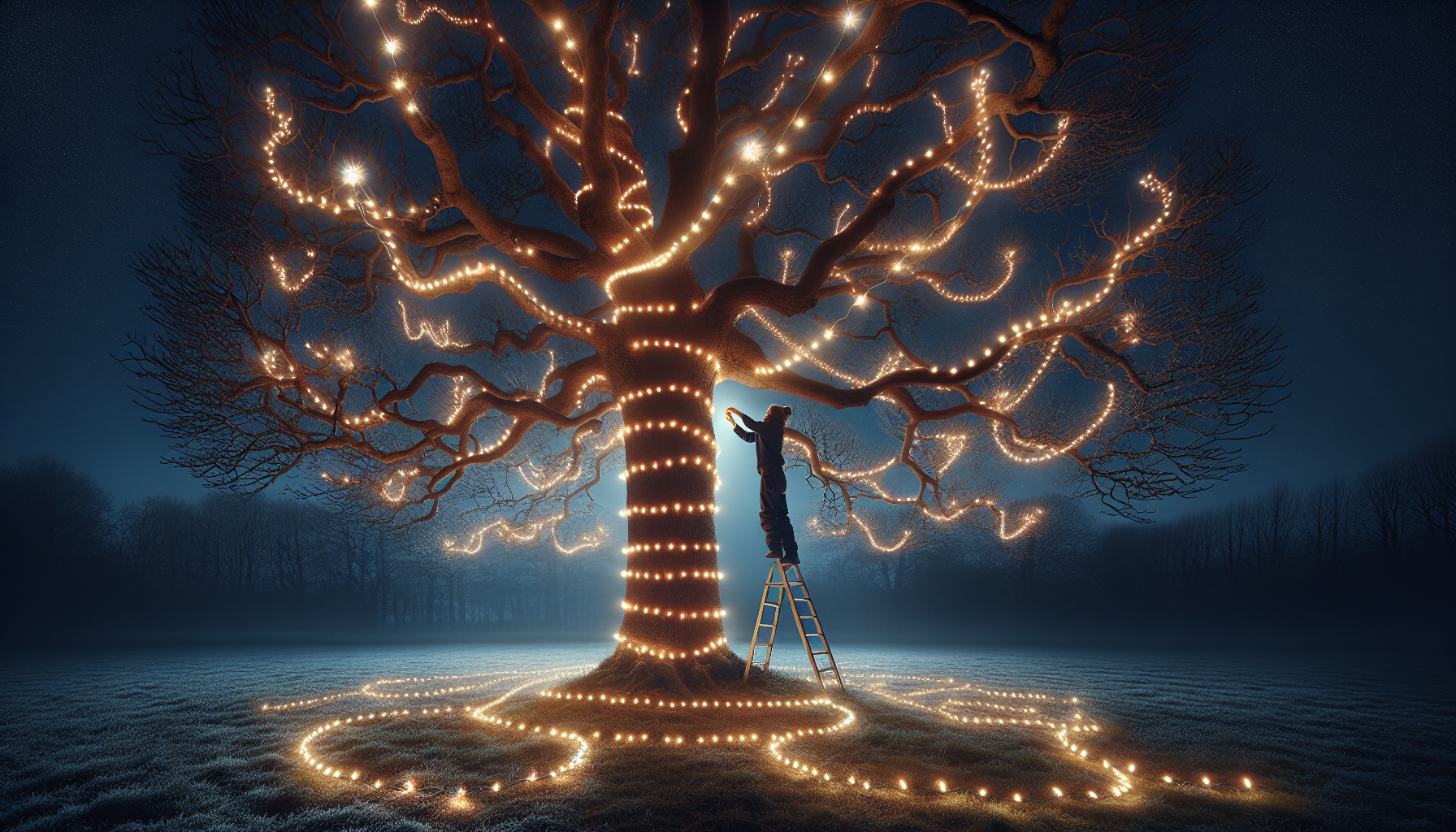Table of Contents
- The Art of Trunk and Branch Wrapping
- Choosing the Right Lights
- Preparing the Power Source
- The Trunk Wrap Technique
- Branching Out: The Branch Wrap Method
- Troubleshooting and Maintenance
- Embracing the Full Potential of Your Trees
- FAQ
The Art of Trunk and Branch Wrapping
Decorating your home for the holidays can be a joyful and creative process, but it’s not without its challenges. One of the most common struggles homeowners face is how to properly light up their trees, ensuring a cohesive and visually stunning display. In this comprehensive guide, we’ll dive into the art of trunk and branch wrapping, providing you with the expert tips and techniques you need to transform your trees into dazzling holiday centerpieces.

Choosing the Right Lights
The foundation of any successful tree lighting project lies in the selection of the right lights. For this task, we recommend the use of LED mini lights, specifically the 5mm variety with a 6-inch or 4-inch spacing. These compact and energy-efficient bulbs offer a brilliant glow that can be easily wrapped around the intricate branches of your trees.
When it comes to the number of lights needed, it’s important to remember that every tree is unique, and the amount required can vary. As a general guideline, plan to use between 25 to 30 strands of lights per tree, with each strand capable of connecting up to 40 lights end-to-end. This will ensure a full, uniform coverage that will make your trees truly shine.
Preparing the Power Source
Before you begin the wrapping process, it’s crucial to have your power source ready to go. Utilize a standard extension cord with a three-way splitter, allowing you to distribute the power evenly across multiple strands of lights. By having the power set up beforehand, you can test your lights as you work, ensuring a seamless and efficient installation.
The Trunk Wrap Technique
Start your tree lighting journey by focusing on the trunk. Begin by plugging in the first strand of lights, positioning the male end on the outside for easy access. Wrap the lights around the trunk, spacing them approximately four fingers apart. As you reach the base of the tree, simply continue the wrap, looping the remaining lights around the lower branches to create a cohesive and visually appealing design.
Branching Out: The Branch Wrap Method
With the trunk wrapped, it’s time to move on to the branches. For this step, it’s important to remember the golden rule: never jump from branch to branch. Instead, work your way up and down each individual branch, carefully wrapping the lights around the natural curves and contours.
To make the process more manageable, consider wrapping the lights into a small ball before attaching them to the branch. This technique allows for greater flexibility and control as you navigate the intricate network of branches. As you work your way up the tree, be mindful of the spacing, aiming for a consistent four-finger gap between each wrap.
If you find that you have excess lights from a particular strand, don’t worry – simply double back and fill in any gaps, ensuring a seamless and uniform coverage.
Troubleshooting and Maintenance
One of the benefits of using a three-way splitter for your power source is the ability to isolate any potential issues. If you encounter a problem with a particular strand of lights, you can easily disconnect it from the rest of the run, making it easier to identify and resolve the issue.
Additionally, it’s important to regularly maintain your tree lighting setup. Periodically check for any loose connections or damaged lights, and be prepared to replace any faulty strands to keep your display looking its best throughout the holiday season.
Embracing the Full Potential of Your Trees
By mastering the art of trunk and branch wrapping, you’ll unlock the full potential of your trees, transforming them into dazzling focal points that will captivate your guests and neighbors alike. With the right lights, a well-planned power source, and a meticulous wrapping technique, you can create a holiday display that is both visually stunning and a true reflection of your holiday spirit.
FAQ
How do I know how many lights I need for my tree?
The number of lights required can vary depending on the size and shape of your tree. As a general guideline, plan to use between 25 to 30 strands of LED mini lights per tree, with each strand capable of connecting up to 40 lights end-to-end.
Can I jump from branch to branch when wrapping the lights?
No, it’s important to avoid jumping from branch to branch when wrapping your lights. Instead, work your way up and down each individual branch, carefully wrapping the lights around the natural curves and contours. This will ensure a cohesive and visually appealing design.
What should I do if I encounter a problem with a strand of lights?
If you encounter an issue with a particular strand of lights, the benefit of using a three-way splitter for your power source is the ability to isolate the problem. Simply disconnect the faulty strand from the rest of the run, making it easier to identify and resolve the issue.
How often should I maintain my tree lighting setup?
It’s important to regularly maintain your tree lighting setup throughout the holiday season. Periodically check for any loose connections or damaged lights, and be prepared to replace any faulty strands to keep your display looking its best.
Can I use a different type of light besides LED mini lights?
While you can use other types of lights, we highly recommend the use of LED mini lights for their energy efficiency, compact size, and brilliant glow. These lights are specifically designed to wrap around the intricate branches of your trees, creating a visually stunning and cohesive display.
